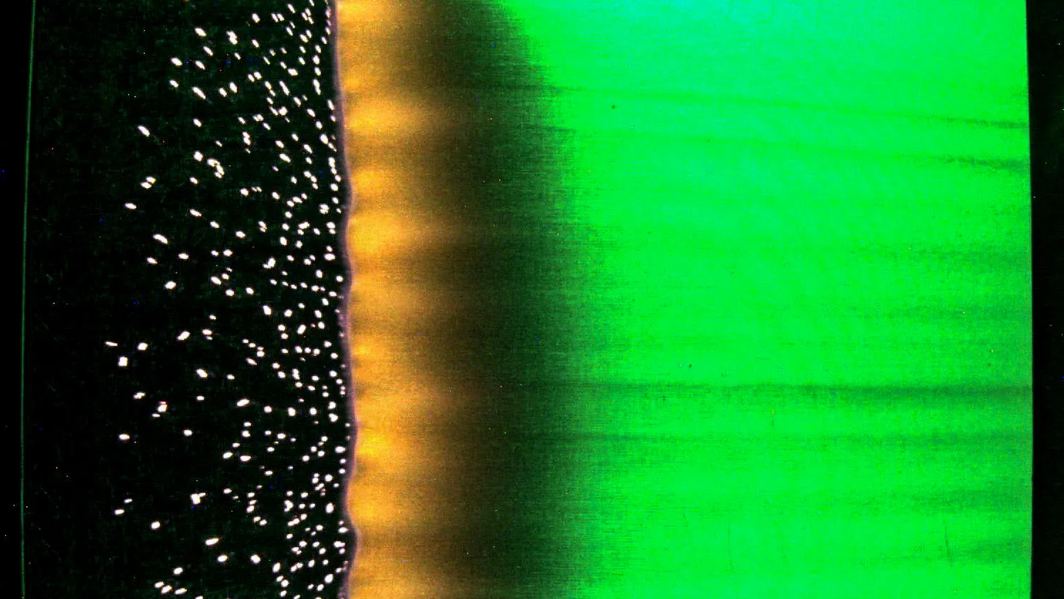Fire on a spacecraft can be catastrophic. It can spread quickly in a confined space, and for trapped astronauts, there may be no escape. It’s fading in time now, but Apollo 1, which was to be the first crewed Apollo mission, never got off the ground because of a fire that killed the crew. There’ve been other dangerous spacecraft fires too, like the one onboard the Russian Mir space station in 1997.
In an effort to understand how fire behaves in spacecraft, NASA began its Saffire (Spacecraft Fire Safety Experiment) in 2016. Saffire was an eight-year, six-mission effort to study how fire behaves in space. The final Saffire test was completed on January 9th.
Fire behaviour in buildings here on Earth is well-studied and well-understood. Fire prevention and suppression are important components in building design. It makes sense to bring that same level of understanding to space travel and even to surpass it.
“How big a fire does it take for things to get bad for a crew?” asked Dr. David Urban, Saffire principal investigator at NASA’s Glenn Research Centre. “This kind of work is done for every other inhabited structure here on Earth – buildings, planes, trains, automobiles, mines, submarines, ships – but we hadn’t done this research for spacecraft until Saffire.”
NASA has conducted six experiments under Saffire, and each one was conducted in an uncrewed Cygnus cargo vehicle after it completed its supply mission to the ISS. The vehicles are sent into the atmosphere to burn up, and the experiments are run prior to the vehicle’s destruction. Saffire 1 ran in 2016 inside an avionics bay with an airflow duct. The bay contained a cotton and fibreglass burn blend, which was ignited remotely with a hot wire.
Subsequent Saffire experiments tested how different materials burned, including the fire-resistant fabric Nomex and even acrylic spacecraft windows. Tests also included varied oxygen flows, different atmospheric pressures, and different oxygen levels. Each Saffire test generated important data on how fire behaves inside spacecraft.
The final segment of the Saffire program, Saffire-VI, was conducted on January 9th, 2024, prior to the uncrewed Northrop Grumman Cygnus spacecraft carrying the experiment burning up during re-entry. Saffire-VI was different than its predecessors in the program because the experiment had higher oxygen content and lower pressure similar to actual conditions in spacecraft.
“The Saffire flow unit is a wind tunnel,” said Dr. Gary Ruff, Saffire project manager at NASA’s Glenn Research Center. “We’re pushing air through it. Once test conditions are set, we run an electrical current through a thin wire, and the materials ignite.”
Fire in a confined environment does more than just damage things and burn people. It also generates harmful combustion by-products. Alongside the predictable carbon monoxide and carbon dioxide, a fire onboard a spacecraft can generate trace amounts of hydrogen fluoride, hydrogen chloride, and hydrogen cyanide. Hydrogen fluoride is a very toxic chemical, and exposure requires immediate medical attention. Hydrogen chloride is an irritant that can become fatal, and hydrogen cyanide can damage the brain, heart, and lungs and can also be fatal. A piece of equipment called the Combustion Product Monitor (CPM) instrument uses laser spectroscopy to analyze the contents of the smoke and detect these hazardous chemicals.

Cameras inside the experiment record what happens, while other instruments outside collect data. After the experiments collect their data, it’s downloaded before the Cygnus vehicle is sent plummeting toward its atmospheric destruction. By altering variables like oxygen content and flow and atmospheric pressure, the experiments gather data that the researchers use to build a predictive model of fire behaviour aboard a spacecraft.
“You’ve got a heat release rate and a rate of release of combustion products,” Ruff said. “You can take those as model input and predict what will happen in a vehicle.”
At this point in time, humans are poised for a big leap. We’re working towards establishing a presence on the Moon. From there, future crewed missions to Mars beckon. Researchers are studying how to protect astronauts’ health during those flights by understanding how their bodies respond to extended time in microgravity, exposure to radiation, and other hazards. Preventing fires and extinguishing them quickly are critical issues in spaceflight and astronaut safety, especially when astronauts are so far away there’s no chance of any assistance.
The models built on Saffire data will help missions succeed and help everyone get home safely.

